Greater St. Louis area, MO 8/16-17/18
All photos are © Marshall Faintich
I made a short trip to St. Louis County, Missouri to visit family, and had a couple of days to go birding with a St. Louis birding pal of mine, Dave Pierce. Dave is an excellent birder who specializes in nests, and knows the greater St. Louis area very well. Prior to this trip, I told him what birds I wanted to try to find, and he planned the birding aspects of my trip. I had been birding with Dave three times in previous years. Although mid-August is not the best time of year to go birding in Missouri, the Mississippi River flyway is a popular route for migrating species, and some rare species can occasionally be found. In addition, Mississippi Kites nest in a fair number of locations in this area.
I expected to see Eurasion Tree Sparrows. This species was imported and released in St. Louis in 1870, and were forced out into surrounding areas by House Sparrows when they arrived in St. Louis, but the Eurasian Tree Sparrows never moved away from these areas, and are almost never found anywhere else in North America. I also thought I might see widely seen Dickcissels, as well as migrating American White Pelicans and migrating shorebirds that I wouldn't see here in central Virginia. Dave said that the greater St. Louis area had a little less rain this summer than usual. During August last year, when I went birding one day with Dave, some of the areas were flooded from recent summer rains.
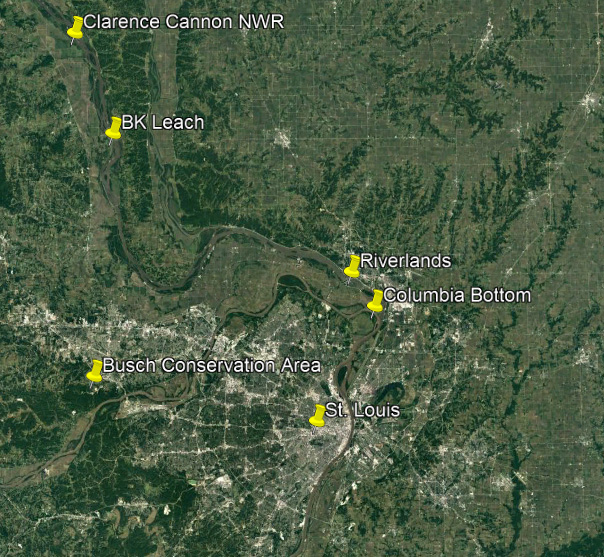
Trip birding sites
| | |
Columbia Bottom Conservation Area; August 16
The Columbia Bottom Conservation Area is in north St. Louis County at the confluence of the Missouri and Mississippi rivers. This 4,318-acre area includes a view of the confluence of the Missouri and Mississippi rivers, 6.5 miles of river frontage, 800 acres of bottomland forest, and a 110-acre island. Until a few days before my trip, a high chance of thunderstorms was forecasted for this day and the next, but Dave worked his magic and it was only partly cloudy, but also very hot and muggy. Our first stop there was at a small boardwalk, but there wasn't any water in the marshy area, and we only saw a few birds there.
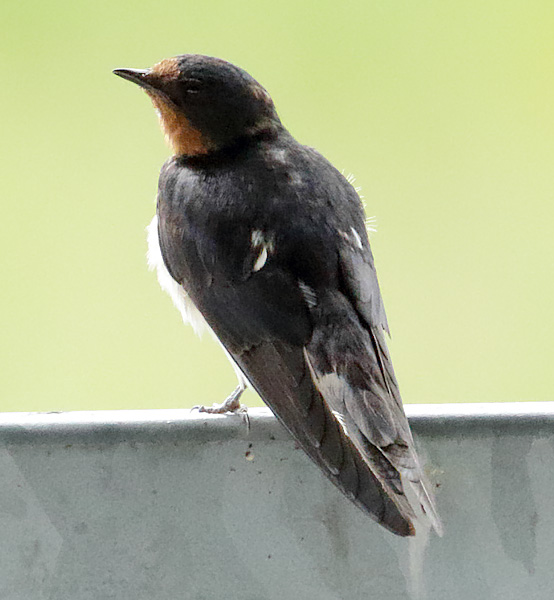
Barn Swallow
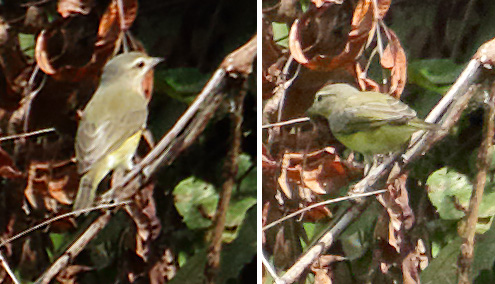
Warbling Vireo
As we were getting back into the car to go to a different site in Columbia Bottom, we got our best birds of the day. Two sub-adult Mississippi Kites flew high above us for about a minute. One of them was clearly molting.
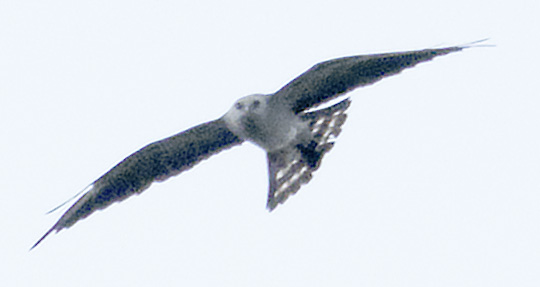
Mississippi Kite
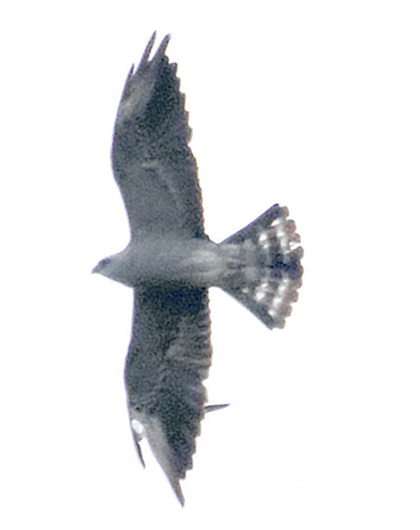
Mississippi Kite
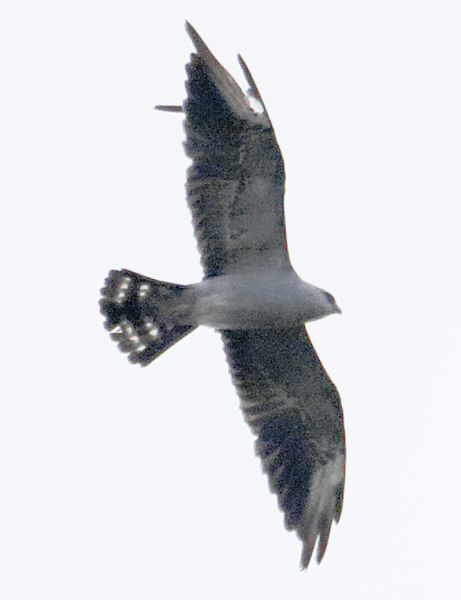
Mississippi Kite

Mississippi Kite
We stopped a bit farther down the road where there was quite a bit of avian activity. The highlight of that stop was watching a pair of juvenile Red-headed Woodpeckers as they flew to and from their nesting cavity in a large dead tree.

Red-headed Woodpecker
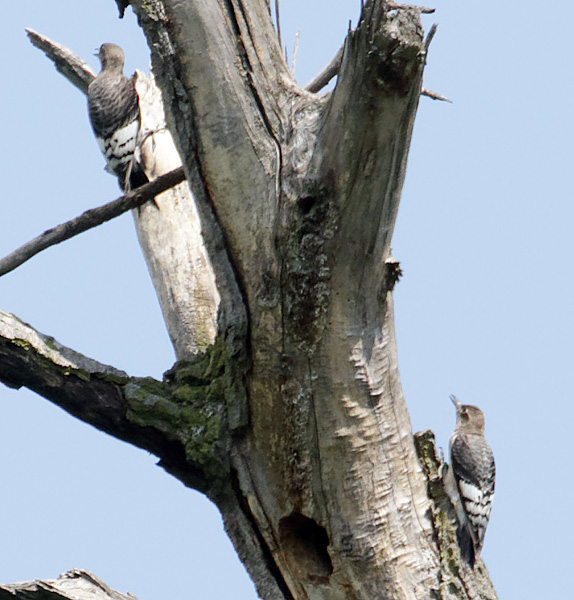
Juvenile Red-headed Woodpeckers
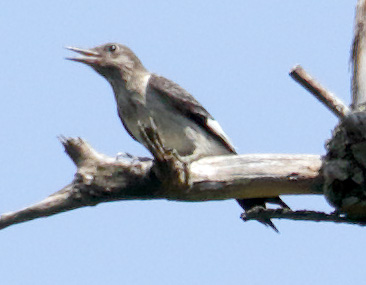
Juvenile Red-headed Woodpecker
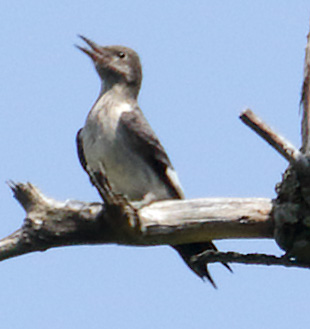
Juvenile Red-headed Woodpecker
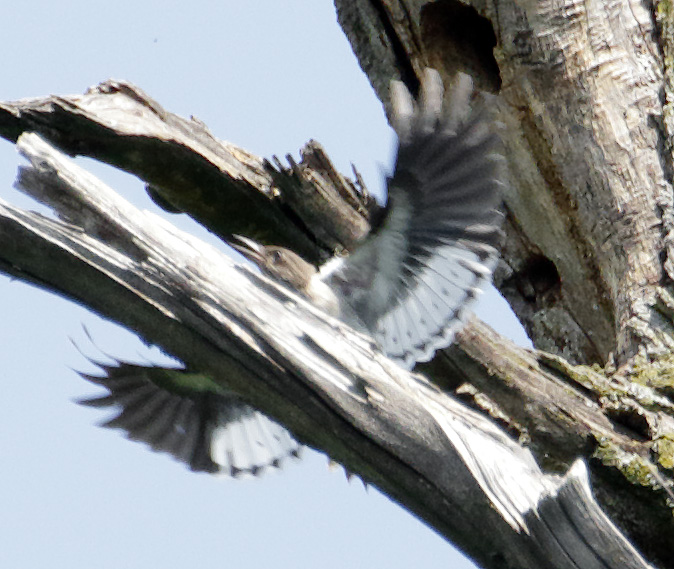
Juvenile Red-headed Woodpecker
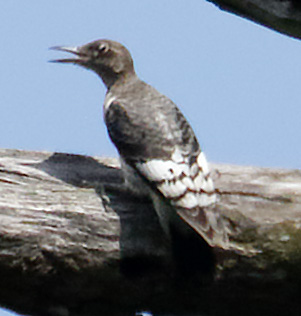
Juvenile Red-headed Woodpecker
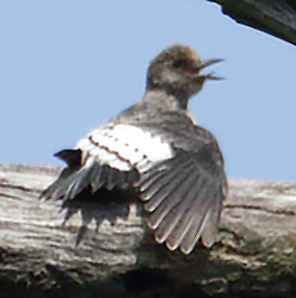
Juvenile Red-headed Woodpecker
Columbia Bottom was fairly quiet compared to last year when I saw lots of Dickcissels there. I only saw one Dickcissel there on this trip, as well as a few other woodland species.
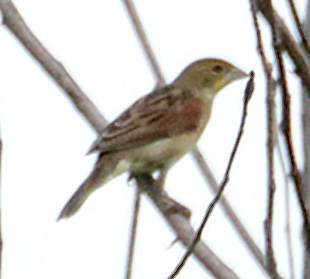
Dickcissel

Indigo Bunting
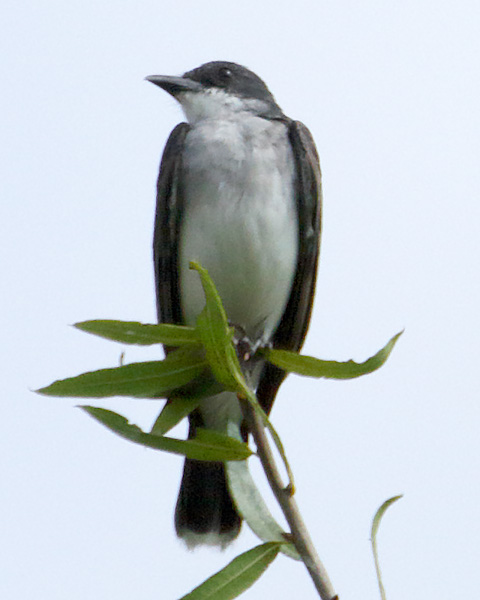
Eastern Kingbird
Riverlands Conservation Area; August 16
We decided to move on to the Riverlands Conservation Area in West Alton. We soon saw a Great Blue Heron and the first of 14 Great Egrets there. When I was there last year, some of the areas were flooded. This time, lot of the usual wet areas were just muddy. Dave had read reports of a couple of unusal shorebirds seen earlier in the morning, but we missed them. However, we did see some good birds. At one point we saw a juvenile Cooper's Hawk being chased by about 30 swallows.
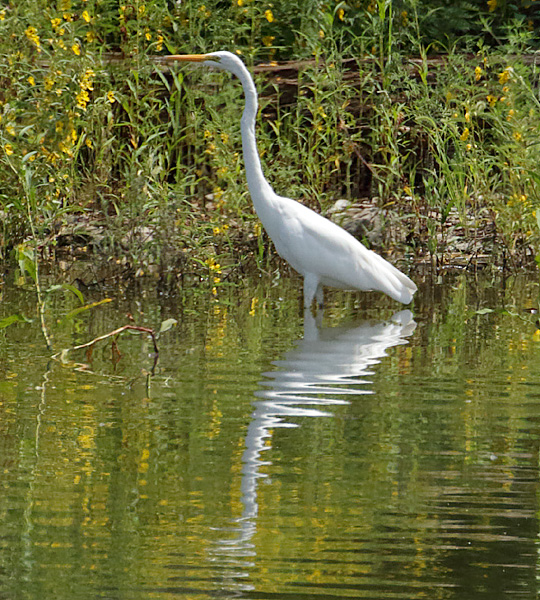
Great Egret
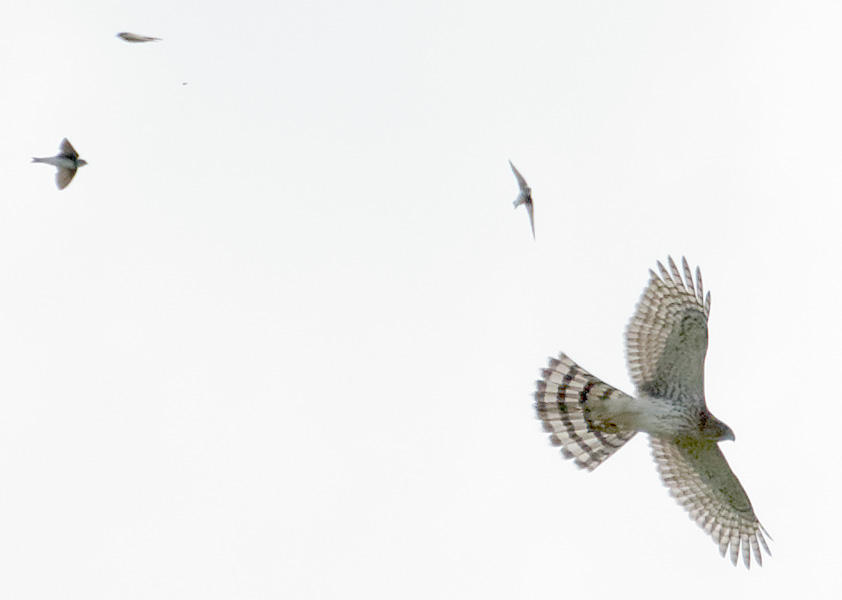
Cooper's Hawk
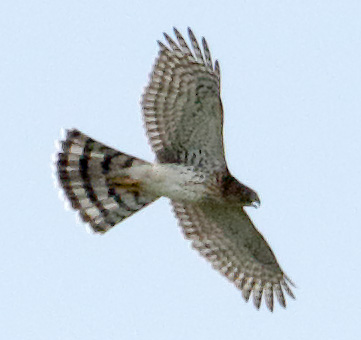
Cooper's Hawk
I was surprised to see Bank Swallows. I didn't know that this species is common there, and I have only seen a few of them here in central Virginia.

Bank Swallow
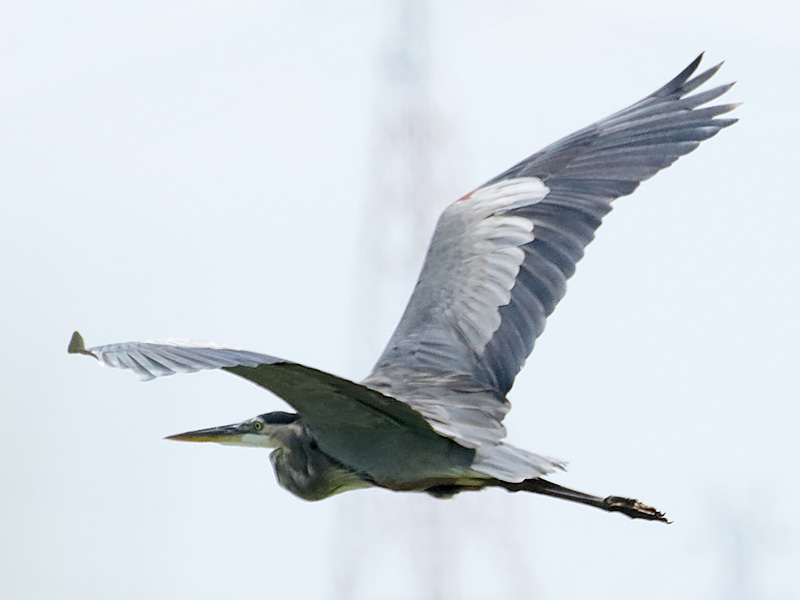
Great Blue Heron
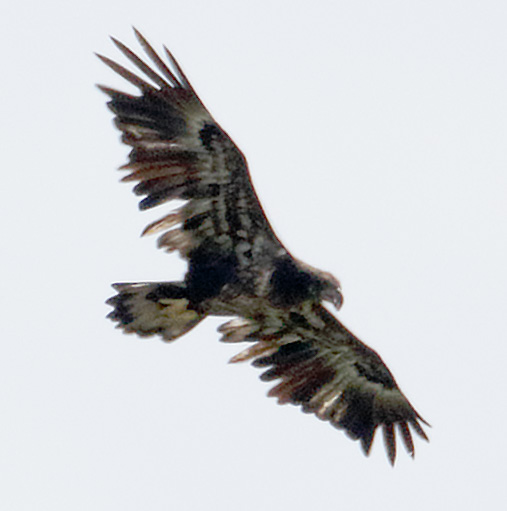
Juvenile Bald Eagle molting to sub-adult basic I plumage
Where there was water, there were birds! At one stop we saw three American White Pelicans and a Double-crested Cormorant. At another stop we saw woodland birds that were bathing by a bank.

American White Pelicans and Double-crested Cormorant

Female Red-winged Blackbird
One of the small water bodies had attracted 12 Great Egrets, Killdeers, 3 Least Sandpipers, and 1 Pectoral Sandpiper.

Great Egret
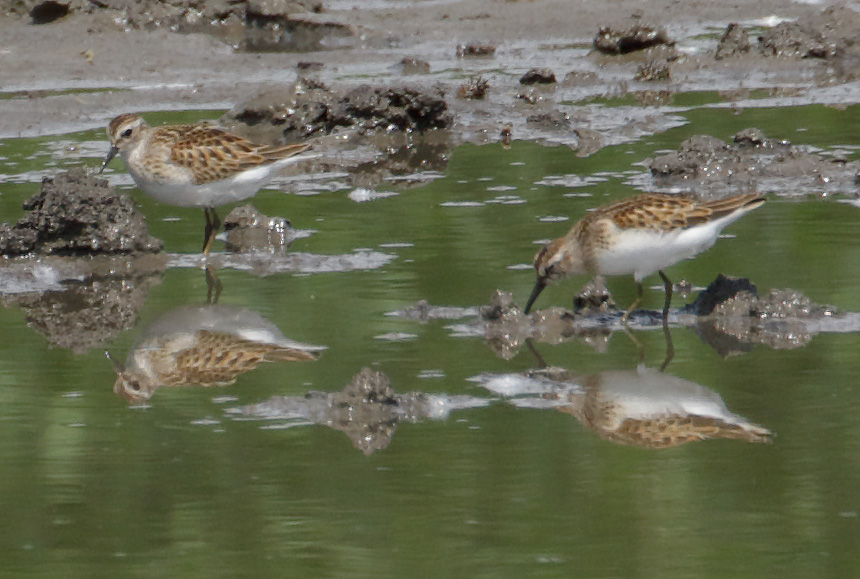
Least Sandpipers
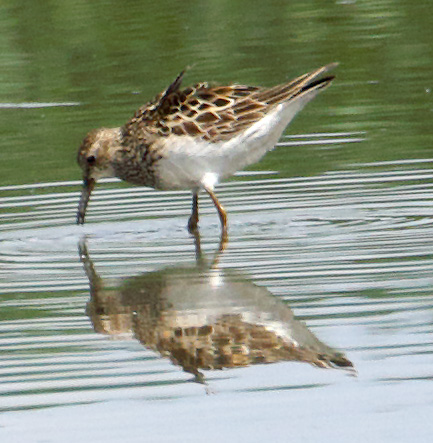
Pectoral Sandpiper
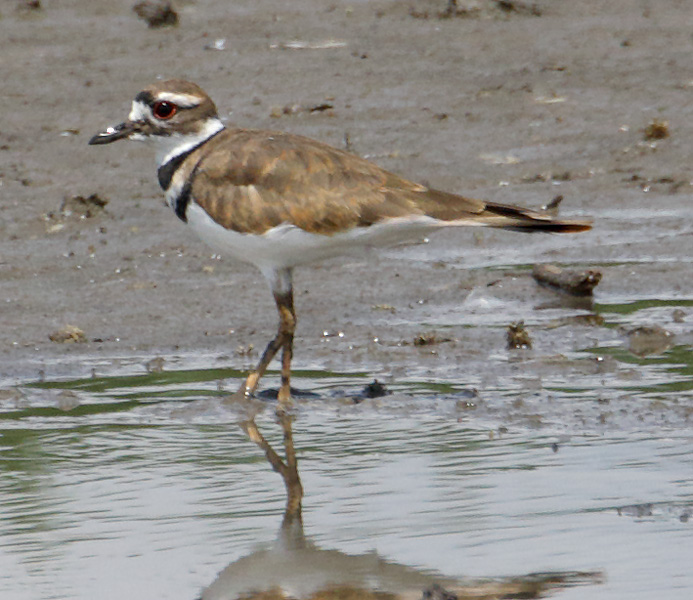
Killdeer
Click here to continue on the next day of the trip




























